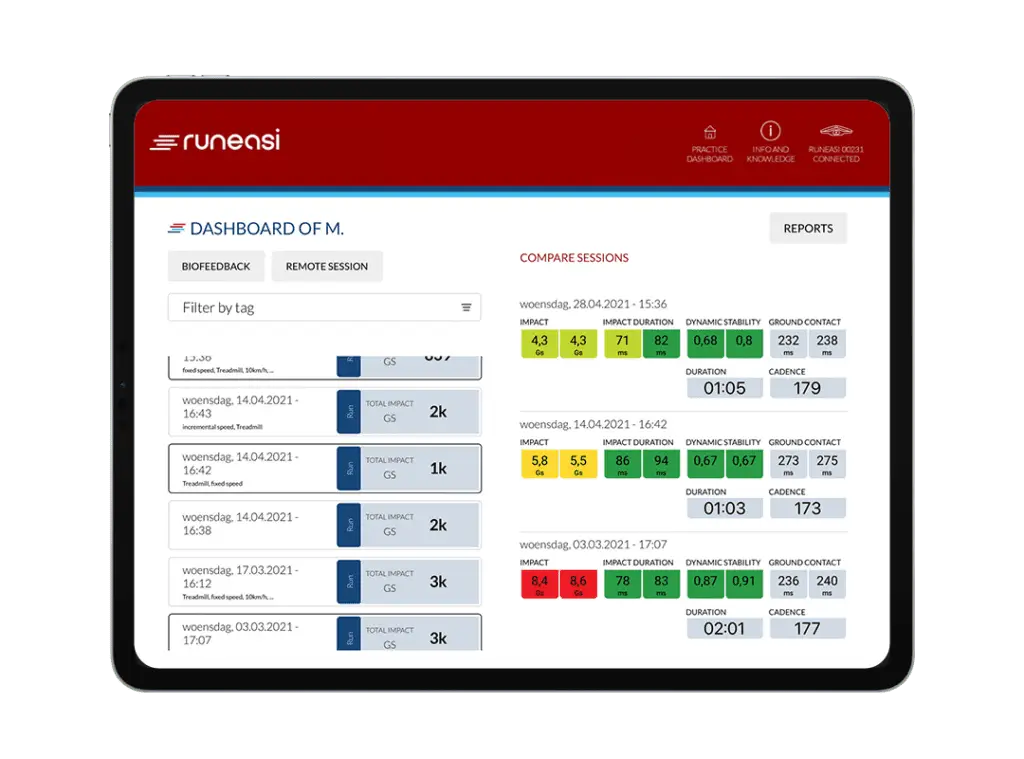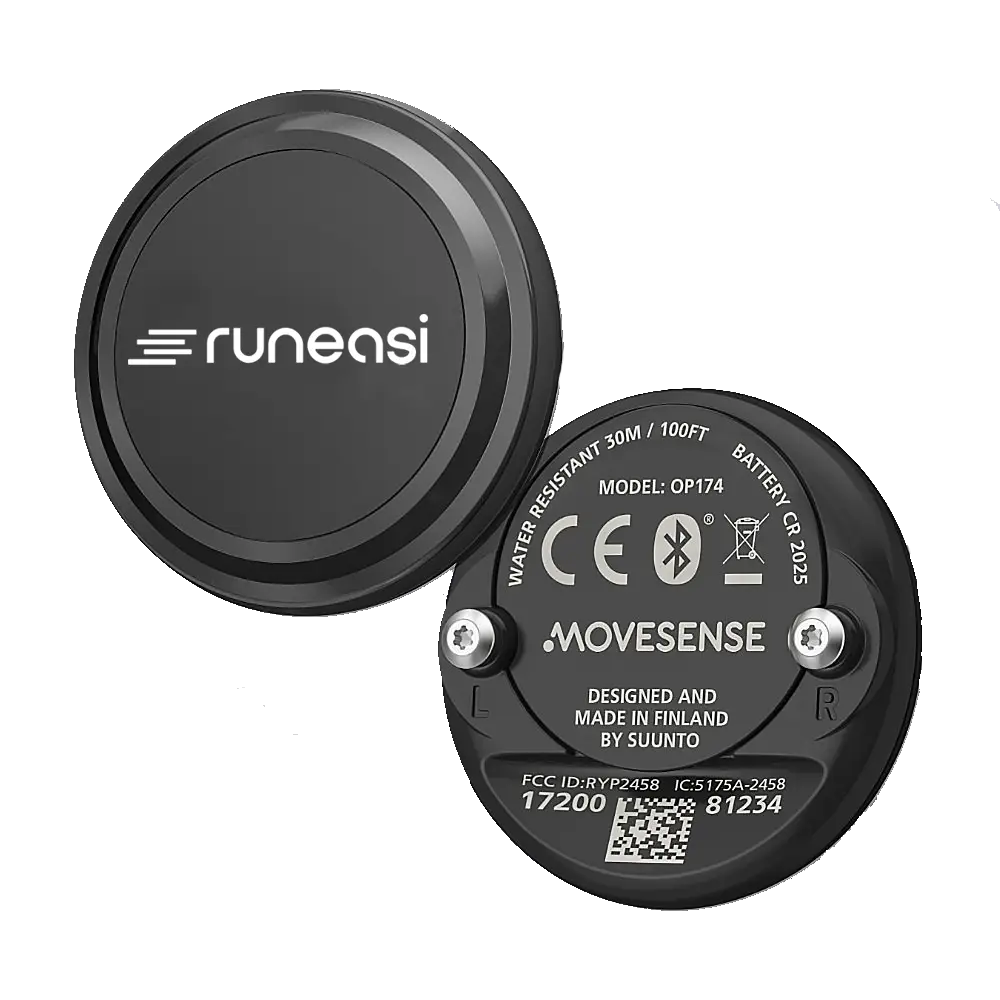Linking 2D video to running biomechanical data
By Jordan Metcalf, PT, DPT, CP-S
With gratitude to Jordan Metcalf of Alterra Physical Therapy, we present you a case study involving an ultrarunner grappling with discomfort in both plantar arches, left knee, and right hip during runs exceeding 6 miles. Seeking insight into the potential causes of his pain, he got help from Runeasi expert, Jordan Metcalf. Let’s dive deeper into this case. 👇
Key findings - physical examination
- Reduced standing rotation to the right.
- Diminished strength and stability during a single-leg hop in place on his right leg.
Key findings - Runeasi analysis
Now, let’s delve deeper into the data of Runeasi

- The impact duration was shorter on the right leg, suggesting difficulty in absorbing and distributing forces across the lower limbs.
- Dynamic stability was worse on the left side (12% difference), often indicative of hip weakness or lack of control contributing to “runner’s knee,” aligning with the patient’s left knee discomfort.
- A longer ground contact time on his left leg may be attributed to poorer pelvic control on that side, potentially compromising stability and adversely affecting step reactivity.
- Fast Decline in running quality at higher speeds, indicating a breakdown in running form at greater velocities.
Linking to 2D video images
- Higher hip drop on the left leg during support, which indicates a lack of hip control.
- Spinal deviation and a wide arm action towards the left during left leg support serve as compensatory mechanisms for the weakened hip control.

Written by Jordan Metcalf, PT, DPT, CP-S
Dr. Metcalf has been practicing physical therapy since 2018 after graduating from Northeastern University. He has a successful history of helping a wide range of patients achieve their movement goals, from weekend warriors to collegiate and professional athletes. He uses a foundation of functional movement and physiology expertise, combined with cutting-edge treatments such as blood flow restriction training and dynamic cupping, and experienced hands-on manual therapies to optimize his clients’ performance. He sustained multiple injuries during high school while playing competitive soccer, and now uses his experiences to improve the performance of other athletes both injured, and not. He is passionate about the success of his clients beyond just their injury recovery and strives to maximize his clients’ resiliency, performance, and musculoskeletal health.







